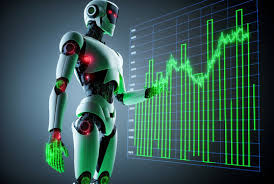In the ever-evolving landscape of financial markets, technology continues to play an increasingly pivotal role. Among the latest innovations reshaping the trading landscape are Forex robots, also known as expert advisors (EAs). These automated trading systems have gained popularity for their ability to execute trades with speed, precision, and forex robot, thereby revolutionizing the way traders engage with the foreign exchange market.
Forex robots are essentially software programs designed to analyze market conditions, identify trading opportunities, and execute trades on behalf of the user. They operate based on predefined algorithms and parameters, allowing them to make decisions without human intervention. This automation eliminates the need for traders to constantly monitor the markets and manually execute trades, freeing up valuable time and reducing the emotional biases that can often lead to poor decision-making.
One of the key advantages of Forex robots is their ability to execute trades with unparalleled speed and efficiency. Unlike human traders, who may be limited by factors such as reaction time and emotional responses, robots can instantly react to market movements and execute trades in milliseconds. This rapid execution can be particularly advantageous in fast-paced markets where opportunities arise and disappear within seconds.
Moreover, Forex robots are not susceptible to the psychological biases that can plague human traders. Fear, greed, and emotions can often cloud judgment and lead to irrational decision-making. By relying on predetermined algorithms, robots can execute trades based solely on logic and objective analysis, minimizing the impact of emotions on trading outcomes.
Another benefit of Forex robots is their ability to operate 24/7 without the need for breaks or sleep. The foreign exchange market is a global marketplace that operates around the clock, five days a week. For human traders, this can be physically and mentally demanding, as it requires constant vigilance to monitor the markets during all hours of the day. Forex robots, on the other hand, can tirelessly scan the markets and execute trades at any time, ensuring that no trading opportunities are missed.
Furthermore, Forex robots can backtest trading strategies using historical data to assess their performance before deploying them in live markets. This allows traders to fine-tune their strategies and optimize parameters to maximize profitability while minimizing risk. By leveraging the power of historical data analysis, traders can gain valuable insights into market dynamics and refine their trading approaches accordingly.
However, it’s important to note that while Forex robots offer numerous advantages, they are not without their limitations. Like any trading strategy, automated systems are subject to market risks and can incur losses under unfavorable market conditions. Additionally, the effectiveness of a Forex robot largely depends on the quality of its underlying algorithm and the parameters set by the user. It’s crucial for traders to thoroughly research and test different robots before integrating them into their trading arsenal.
In conclusion, Forex robots represent a groundbreaking advancement in the world of trading, offering unparalleled speed, efficiency, and objectivity. By harnessing the power of automation, traders can streamline their operations, minimize emotional biases, and capitalize on trading opportunities with precision and consistency. While Forex robots are not a guaranteed path to success and should be used with caution, they undoubtedly have the potential to revolutionize the way traders engage with the foreign exchange market. As technology continues to evolve, Forex robots are likely to play an increasingly prominent role in shaping the future of trading.
